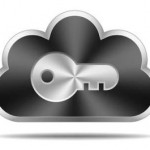
The Infocomm Development Authority(IDA) of Singapore just released their forecast for IT trends in the next three to five years.
A review of key disruptive IT trends that will impact Singapore and the world, the Infocomm Technology Roadmap 2012 was written in conjunction with the industry, researchers and academics after a year of collaboration.
With the world undergoing rapid changes in demographics, urbanization and resource challenges, IT will have a huge part to play in mitigating and solving the problems of the future.
For example, with an ageing population for developed nations — particularly relevant to Singapore since we’ve one of the lowest birth rates in the world — IT can be used to support integrated healthcare services for the elderly like speciality hardware for visual, hearing and speech needs.
Smarter tools can help optimize limited resources of increasingly congested cities. For example, real-time analytics via integrated sensors can diagnose and spot problems-on-the-fly, from traffic jams to flooding, and help recommend solutions.
On a global scale, global warming and sustainability are two of humanity’s most pressing problems that threaten our very existence. With an estimated world population of nine billion by 2050 (by UN estimates), there will be increased demand for limited resources, especially non-renewable energy sources like gas and oil to power the rapidly industrializing third world.
Global warming will likely devastate agriculture and biosystems, and also put immense pressure on scarce food and water resources to feed a burgeoning planet. With IT consuming a significant amount of energy worldwide — about 5 to 10 percent of the world’s current energy consumption, according to UN estimates — green energy-saving IT solutions will definitely be in vogue as energy costs rise.

IDA’s nine technology themes for the future. Click to enlarge
And there were nine to rule them all
With this as a backdrop, IDA scoured the world for the top IT trends that will impact Singapore and the world, and distilled it down to nine themes.
- Big data. With the rapid increase in people and devices connected to the Internet, data is growing at a phenomenal rate. This amassed data pool contains hidden insights which can be tapped to solve difficult problems. Real-time analytics, data discovery, and data management are some technologies key to unlocking big data’s potential.
- Cloud computing. Cloud computing has and will continue to change the business landscape with its lower-cost, on-demand utility and flexibility advantages. The concept is made possible by advances in storage and network technologies like virtualization and fast network fabrics.
- Cyber security. With cyber attacks being orchestrated and becoming more sophisticated, continuous innovation is necessary in the arms war against the more nefarious elements of the information Internet age.
- Internet of things. Machine-to-Machine(M2M) technologies are set to become a big reality with the pervasiveness of cheap computing devices and sensors. With the boundaries blurring between the real and virtual worlds as every device and physical thing gets an IP address, M2M will spur new intelligent services and information exchange.
- Green IT and Sustainability. With sustainability being one of the biggest challenges in the future, the world needs solutions and political will more than ever. From smart energy-saving grids to low-power consumption devices, green IT can help to mitigate and slow down our ever increasing hunger for energy.
- Social media. Social media is a force that will change the world, from Facebook to Wikipedia to Kickstarter. Just look at Arab Spring, Occupy Wall Street or even our elections here in Singapore last year. And it will continue to evolve and create all kinds of new services that people will use.
- New digital economy. E-commerce and Web 2.0 evolve as new mobile and web technologies drive business innovation. NFC (Near Field Communications) for short-range mobile interaction, mobile wallets and interactive video applications via HTML 5 are some examples.
- User interface. Microsoft surface, anyone? Augmented reality, 3D immersive telepresence and computer-brain interfaces will drive how we interact with our data-rich future.
- Communication networks of the future. With 4G LTE (Long Term Evolution) mobile network deployments just sprouting up this year, the world is set for advances on the telco end of things, especially on bandwidth. And just in time to fuel the M2M, social media and big data explosion of the future.
This Infocomm Technology Roadmap 2012 is open to public consultation till September 2012 and feedback can be given on their website. A final report will be published in November 2012.
The last technology roadmap IDA did prior to this was done in 2005, so I do think it was about time that IDA refreshed the big-vision thinking pieces. Interestingly, the way I see it, these different themes are tackled by different types of companies in Singapore.
I see a lot more more start-ups in the cloud, social media, and digital economy spaces. Examples include digital couponing solutions (e.g. Beeconomic and LivingSocial) to social media tracking (Brandtology and JamiQ, where I once worked).
Big data, cloud platform solutions, cyber security, green IT and comms networks are more championed by MNCs. For user interfaces, the most interesting ideas come from our research agencies like A*Star, like gesturing or BCI (Brain Computer Interface) solutions.
I have one piece of feedback for IDA. One piece of useful information that would be useful to the public, is if IDA could explain how they are going to prioritize these nine technology areas further down the road, i.e. applying what they learnt in this report.
For example, is IDA going to champion and look into all of these themes at the same time? How? Etc. This is especially in the context of nurturing the IT industry in Singapore.
What do the rest of you reading this think?







IDA spent one year to develop the Roadmap .
Much of what was written has been discussed on the Internet .Nothing new.
What you want to see is something more analytical and in depth- what , how, when , who etc
More specific examples that affect very sectors of the economy .
A lot of money wasted for something so obvious.